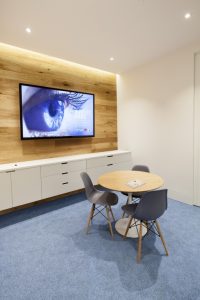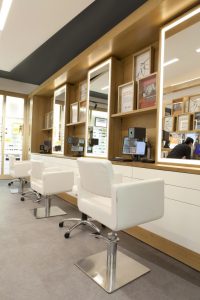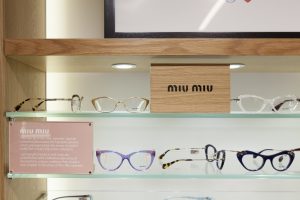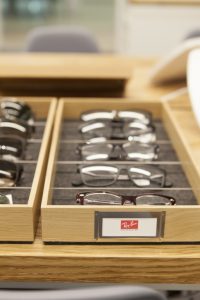To more fashionably fuse the clinical requirements and retail goals of its 400 eyewear stores worldwide, Milan-based Luxottica Group tasked Ziba Design (Portland, Ore.) with creating a prototype that would serve as a model for all the optical-wear giant’s retail brands on four continents.
The company chose its Sydney store as a test unit for the OPSM brand it operates in Australia. To revamp the brand across all units, Luxottica recently rolled out its “Eye Love” campaign, featuring symbols of eyes and hearts, displayed via signage in all of the company’s stores.
“The optical industry is quite old,” says Donatella Randino, visual merchandising director for Luxottica Retail Australia. “We were looking more for a revolution than an evolution … The idea was to change eyeglass shopping from ‘grudge’ to ‘love,’” adding that the average eyewear shopper waits more than two years between store visits.
To quell the dread of eyeglass shopping, it was important to downplay the clinical aspects of the store. This informed Ziba’s design direction, explains Mick Glenn, the firm’s environmental design director; the concept steered them “toward a well-balanced palette of materials, such as crisp glass detailing, warm woods set against a raw concrete floor and a slight touch of domestic styling.”
Reimagining the store’s functions proved most challenging. Ziba and Randino’s collective team did away with the idea of conventional display walls and examination rooms. Instead, customers see a standing-height communal selection table as they enter the store’s “Gallery,” where they can try on frames and consult with staff. Gone are office-like consultation desks, Glenn says. They’ve been replaced by discrete laptops and iPads.
Examination rooms were also nixed in favor of “consult hubs,” where opticians perform exams. Materials from the Gallery were carried over into this section, providing cohesion between the different areas. Following their exams, customers are shown to the “Studio,” where frames are fitted. Designed in the pampering aesthetic of a high-end salon, complete with adjustable chairs and large mirrors, customers are encouraged to enjoy the experience.
Advertisement
“In the end, [eye care] needs to be precise and expert, but it doesn’t need to be sad,” Randino says.
Randino and Glenn also shifted the way OPSM merchandises its products – doing away with, what Glenn called, a “sea of frames” that could overwhelm customers. Instead, frames are presented in curated collections, sorted by specific styles.
Luxottica relied on focus groups, which revealed that traditional eyewear stores weren’t engaging – an obstacle Randino believes they’ve now overcome.
“The design ties into the ‘Eye Love’ campaign, and that’s why it works,” says Randino. “This represents [the brand] in a physical way.”


 Photo Gallery3 days ago
Photo Gallery3 days ago
 Headlines1 week ago
Headlines1 week ago
 Headlines2 weeks ago
Headlines2 weeks ago
 Sector Spotlight2 weeks ago
Sector Spotlight2 weeks ago
 Headlines1 week ago
Headlines1 week ago
 Headlines4 days ago
Headlines4 days ago
 Headlines2 weeks ago
Headlines2 weeks ago
 Designer Dozen1 week ago
Designer Dozen1 week ago


























